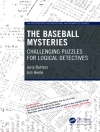The bestselling book that has helped millions of readers solve any problem
A must-have guide by eminent mathematician G. Polya, How to Solve It shows anyone in any field how to think straight. In lucid and appealing prose, Polya reveals how the mathematical method of demonstrating a proof or finding an unknown can help you attack any problem that can be reasoned out—from building a bridge to winning a game of anagrams. How to Solve It includes a heuristic dictionary with dozens of entries on how to make problems more manageable—from analogy and induction to the heuristic method of starting with a goal and working backward to something you already know.
This disarmingly elementary book explains how to harness curiosity in the classroom, bring the inventive faculties of students into play, and experience the triumph of discovery. But it’s not just for the classroom. Generations of readers from all walks of life have relished Polya’s brilliantly deft instructions on stripping away irrelevancies and going straight to the heart of a problem.
عن المؤلف
G. Polya (1887–1985) was one of the most influential mathematicians of the twentieth century. His basic research contributions span complex analysis, mathematical physics, probability theory, geometry, and combinatorics. He was a teacher par excellence who maintained a strong interest in pedagogical matters throughout his long career. Even after his retirement from Stanford University in 1953, he continued to lead an active mathematical life. He taught his final course, on combinatorics, at the age of ninety.
John H. Conway (1937–2020) was professor emeritus of mathematics at Princeton University. He was awarded the London Mathematical Society’s Polya Prize in 1987. He was interested in many branches of mathematics and invented a successor to Polya’s notation for crystallographic groups.












